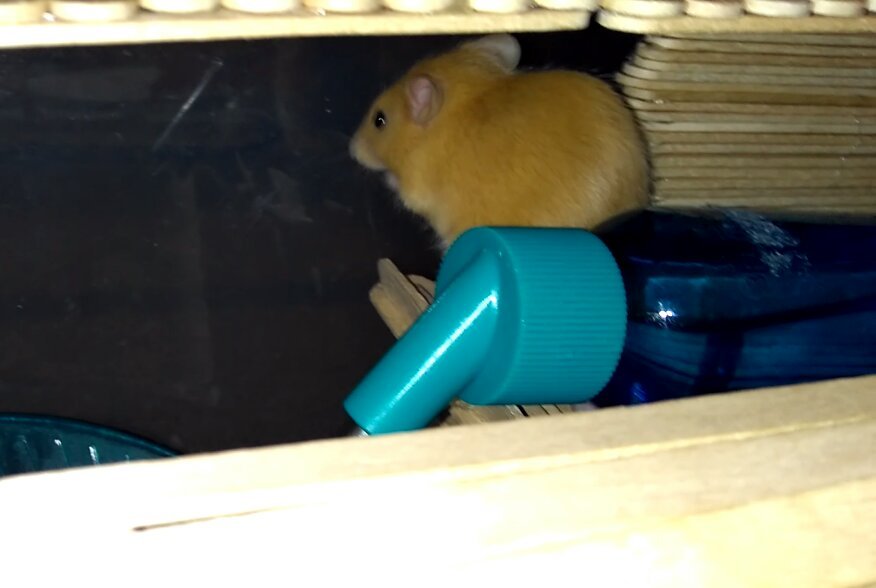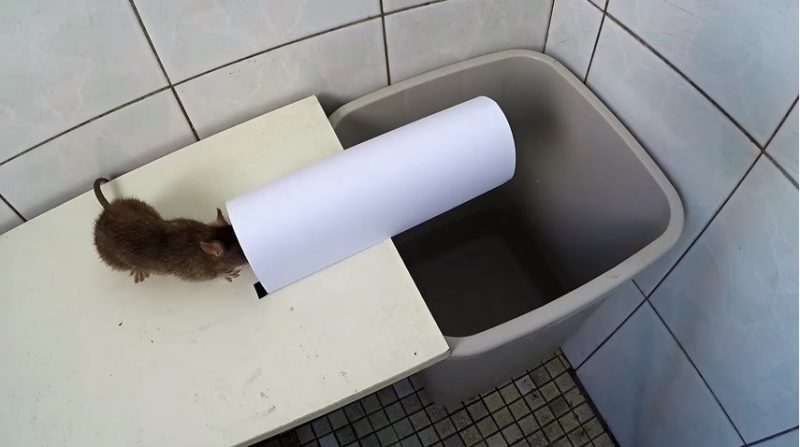

Set the traps against walls in areas frequented by the rodents (i.e., places where you’ve seen droppings). The bait must be at the very back of the trap so that the rodent’s tail won’t get caught in the trap door, which can break it. Place a dab of peanut butter underneath the trigger mechanism at the back of the trap (if there is no trigger, place the bait on a small wooden block set at the back of the trap and place a dab of the loganberry paste, if you have it, on top of the peanut butter). Bait traps with peanut butter or Trapper’s Choice Loganberry paste, which can be ordered from U-Spray at 1-80. Havahart Chipmunk Traps #0745 can be used to live-trap rats.

Many hardware stores and humane societies-as well as PETA-sell live mousetraps. Traps should be scrubbed with a mild bleach solution (to eliminate food smells), disabled, and securely stored when not in use-especially during cold weather and times when they cannot be checked hourly! Live cage or box traps are humane so long as they are checked hourly. Mice and rats can die from stress-induced disorders, exposure, or dehydration in just a few short hours. Once you’re sure animals are gone, cover the area with foam sealant, hardware cloth, or metal flashing.Īfter rodent-proofing the building, any animals who remain can be live-trapped during mild weather and released nearby. Once animals have been repelled, seal entry points temporarily using steel wool or insulation. Repel rodents by using ammonia-soaked rags or cotton balls (animals won’t like the smell and will leave), an indoor/outdoor radio (set to rock music or talk radio), or a strobe light. (Rats can slip into buildings through quarter-size holes, and mice can squeeze into dime-size holes.) Feces and signs of chewing or food-storing can also help determine the places that rodents frequent. Next, determine where the animals are entering and frequenting by using a flashlight to locate entry points such as holes and cracks, gaps around pipes and doors, etc. Reduce hiding places by keeping grass and vegetation trimmed back and by storing outdoor furniture, grills and barbecues, and wood piles away from buildings. Seal trash (use bungee cords on lids), pick up your animal companions’ food at night and never feed them outdoors, pick up fallen fruit and vegetables in orchards and gardens if possible, and never feed wildlife.
#DIY MOUSE HOUSE FREE#
Eliminate access to food by keeping counter surfaces, floors, and cabinets free of crumbs and storing dry food and pet food in chew-proof containers. Rodents are attracted to areas with adequate food sources and shelter, both indoors and outdoors. This is because when animals are killed or otherwise removed, the resultant spike in the food supply causes accelerated breeding among survivors and newcomers-and this means increased populations!Įffective rodent-control programs are integrative and adaptive and focus on repellents, deterrents, and exclusion.

Furthermore, lethal methods never work to keep rodents away in the long run and will actually backfire. Glue traps also pose risks to all small animals as well as posing disease risks to humans (Health Canada and the Centers for Disease Control and Prevention both caution against their use). Poisons are highly toxic to humans and pose risks to companion animals and nontarget wildlife who come into contact with them or with the bodies of poisoned rodents. Glue traps and poisons are futile, dangerous to humans, and extremely cruel, as animals often spend days suffering before eventually dying in agony. Learn more awe-inspiring facts and read more stories about rats, mice, and other animals in the bestselling book Animalkind.

Rats love to be tickled, and they make ultrasonic chirping noises that sound like laughter.


 0 kommentar(er)
0 kommentar(er)
